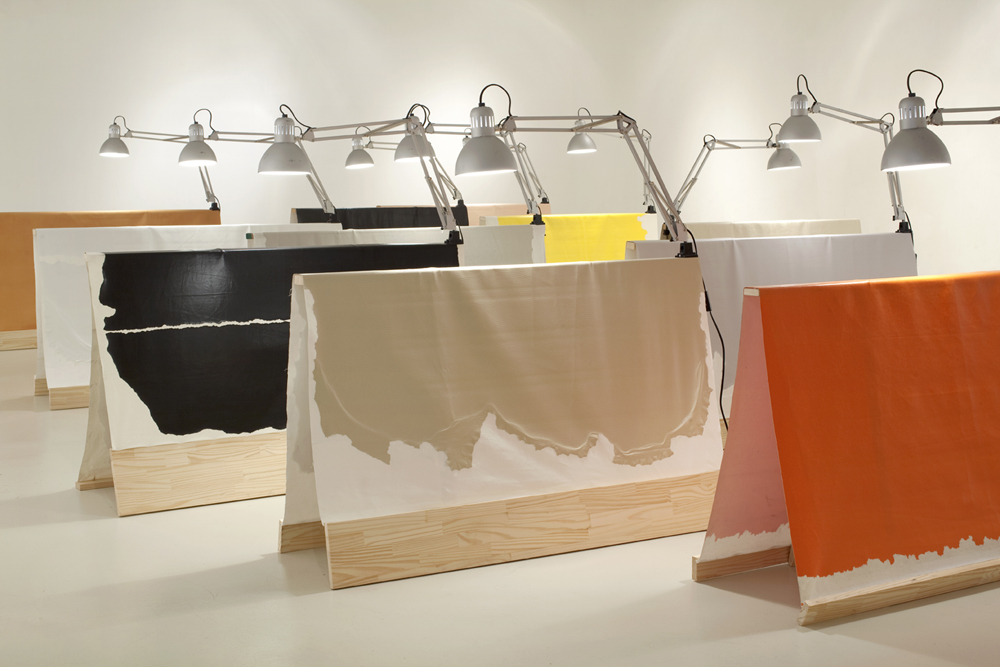
Loot (installation)
-
Mixed media: peeled leatherette, pine wood, aluminium table lamps, dimensions variable
Curator Leah Abir
Year 2009
The installation consists of twelve tent-like structures, each draped with a scraped, colored fake leather surface and lit by a work-lamp. The space could be a factory at night, each tent one working station. The front of the room holds a desk, perhaps a supervising station, although its design strangely blocks the view of the rest of the room. The desk is further removed from any concrete function because its contents are only partly ready-mades: actual books and office materials are combined with raw wood elements, stand-ins for useful objects.
The sculptural installation relates to the other works of the same name through a shared interest in heritage, but focuses on the material and even commercial aspects of the term. Heritage is explored here in the sense of workmanship, traditions of labor, specifically those that domesticate raw materials into commercial goods. In fact, the process that created the patterns in the fake leather is contrary to craftsmanship, and does not follow any age-old tradition: Goldstein peeled the top shiny layer off with his fingernails, so that the patterns created cannot be controlled precisely, and record his physical labor rather than producing a new creation. A relation between the animal and man-made is exposed in the white fabric surface: fake animal skin, real human labor, and its dispersal throughout the space reminiscent of a campground, another human design on animal or “wild” space. The artistic work is readable in the peeled skins, which are man-made to begin with, but the work is reductive rather than productive. In this one-man factory, the work has been frozen before any product has been produced, and an in-between moment of the production process from the natural to the man-made is presented in its various complexities.